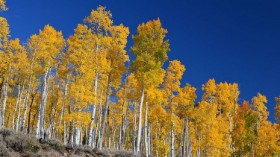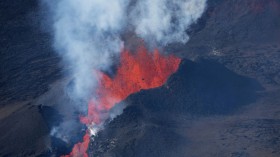A hidden submarine volcano in Hawaii called Kamaʻehuakanaloa has already erupted five times over the past 150 years, providing geologists with new information on the state's expanding volcanoes.
Eruptions of the Hidden Undersea Volcano, Kamaʻehuakanaloa
For the first time, researchers at the University of Hawai'i at Mānoa have been able to estimate the ages of the eight more ancient eruptions of the submerged Hawaiian volcano Kamaʻehuakanaloa, which is located around twenty miles off the south coast of the Big Island and has had nine eruptions in the past 2,000 years.
The volcano formerly referred to as the Lōʻihi Seamount, which the Hawai'i Board of Geographic Names renamed in 2021, has erupted no less than five times in the previous 150 years, based on new research headed by UH Earth scientists.
Kamaʻehu is the sole active and exposed example of a pre-shield Hawaiian volcano, according to Aaron Pietruszka, the study's lead author and an associate professor in the Earth Sciences Department at the University of Hawaii at Mānoa. The massive lava outpouring that happens during the shield stage on the other Hawaiian volcanoes covers this early period of volcanic history. As a result, finding out more about Kamaʻehu's development and evolution is of significant interest.
1996 Swarm of Earthquakes in Hawaii
Before this eruption, Hawai'i's underwater volcano had only one known and verified eruption, which took place in 1996. It was only found because it happened to coincide with a significant cluster of earthquakes that seismometers on the Big Island remotely observed.
According to Pietruszka, because earthquakes are fleeting, seismometers are only effective to track the continuing active eruptions of undersea volcanoes.
The scientists used a different method to establish the ages of earlier eruptions at Kamaehu. Pieces of cooled glassy lava that were taken from the Kamaehu seafloor outcrops using a submersible were analyzed using a mass spectrometer to calculate minute levels of the isotope radium-226.
Radium-226, a chemical isotope that radioactively decays at a known rate, is present in magma by nature. The amount of radium-226 in every sample was utilized by Pietruzska and the other authors of the study to estimate how long had gone since the seafloor lava eruption.
Growth of Hawaiian Volcanoes
It is believed that Hawaiian volcanoes go through many stages of growth. While its neighboring active volcano Klauea is at its major shield-building stage, Kamaehu is currently in the initial submerged "pre-shield" stage of growth.
Over time, the chemical of the lava that Hawaiian volcanoes release changes. When combined with observations of lava chemistry, the new eruption age estimates for the lavas from Kamaehu show that this pre-shield volcano experiences lava chemical variations every 1,200 years or so.
In contrast, the chemistry of the Kilauea lava varies within a short period of time-a few years to a few decades-with a whole cycle taking roughly 200 years.
The location of the two volcanoes on top of the Hawaiian hot zone, according to Pietruszka and his team, may have something to do with how this difference first came about. 'Mantle plume' refers to the region of the Earth's mantle which is rising to the surface and will eventually melt to provide the magma needed by Hawaiian volcanoes.
According to models along with additional isotope data from thorium-230, a mantle plume's center should rise more quickly than its periphery. This concept is independently confirmed by the team's findings, particularly the factor of six longer timescales of fluctuation in the lava chemistry at Kamaehu.
Connecting the Dots
After completing his doctorate in Earth science at UH, Pietruszka began this work at the Carnegie Institution for Science many years ago. He had access to underwater dive films and images of Kamaehu once he arrived back in UH-Mnoa in 2019.
Pietruszka said that the lavas with the highest radium-226 also had the freshest appearance, and vice versa for the lavas with the 'older' appearance, that is, those that were cracked and shattered and/or covered in marine silt. The fact that Kamaehu had erupted five times in the previous 150 years, indicating a frequency of 30 years between eruptions at this volcano, shocked him.
The average gap years between eruptions are still significantly shorter compared to the previous eight eruptions that occurred within the past 2000 years, even if this is far slower than at Kilauea, which erupts virtually continually with uncommon breaks of only a few years, Science Daily reports.
To better understand the deep influences on volcanic eruptions that begin within the enigmatic, upwelling mantle plume beneath the Hawaiian hot spot, the research team is working to better understand how Hawaiian volcanoes function from the earliest growth stages of volcanoes to their full, constantly active, maturity, Big Island Now reports.
The findings of Pietruszka and his team were recently published in the journal Geology.
Related Article: Sustainable Energy From Extinct Underwater Volcano Zuidwal Could Bring Heat to Netherlands Homes
© 2024 NatureWorldNews.com All rights reserved. Do not reproduce without permission.





